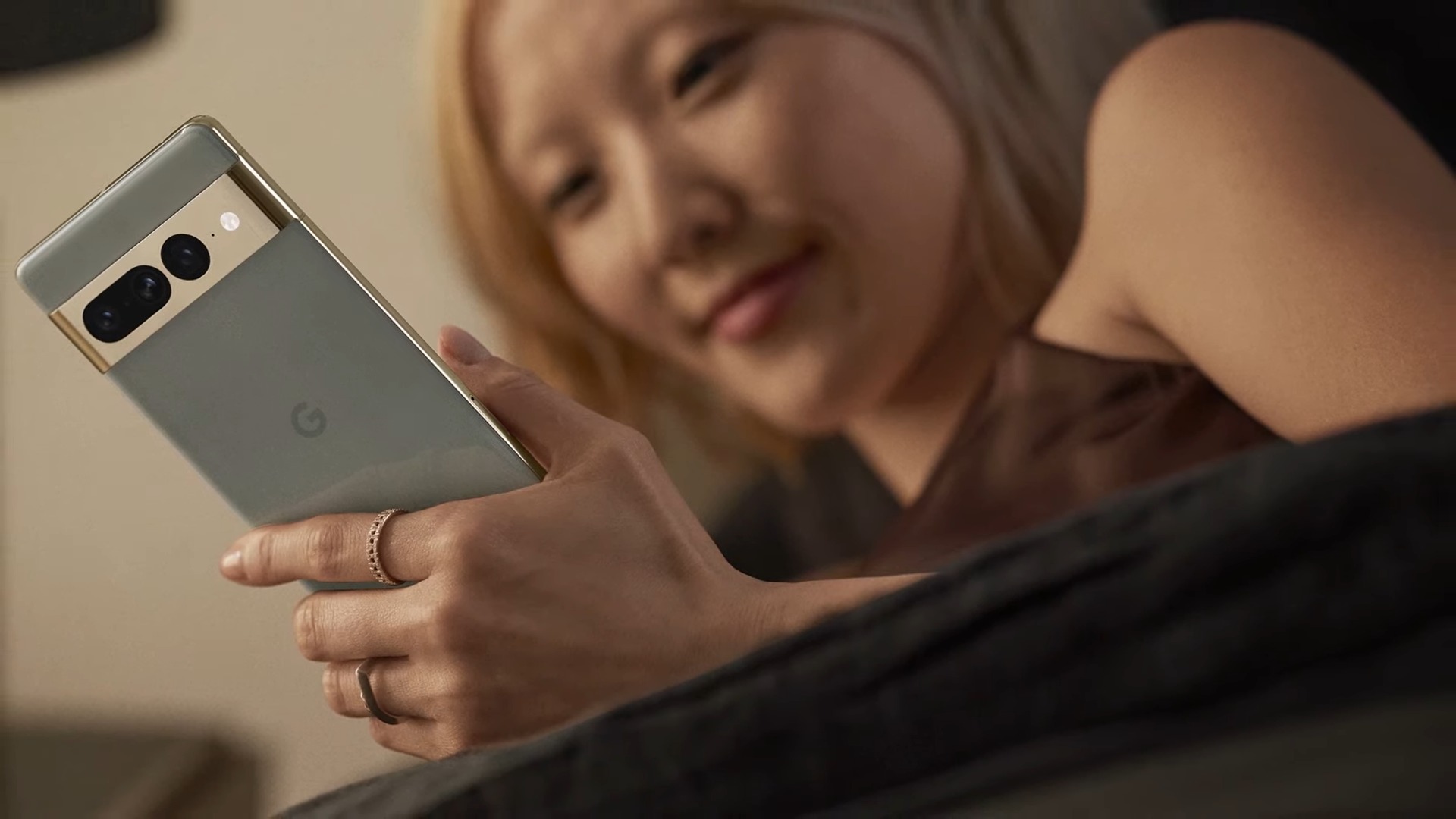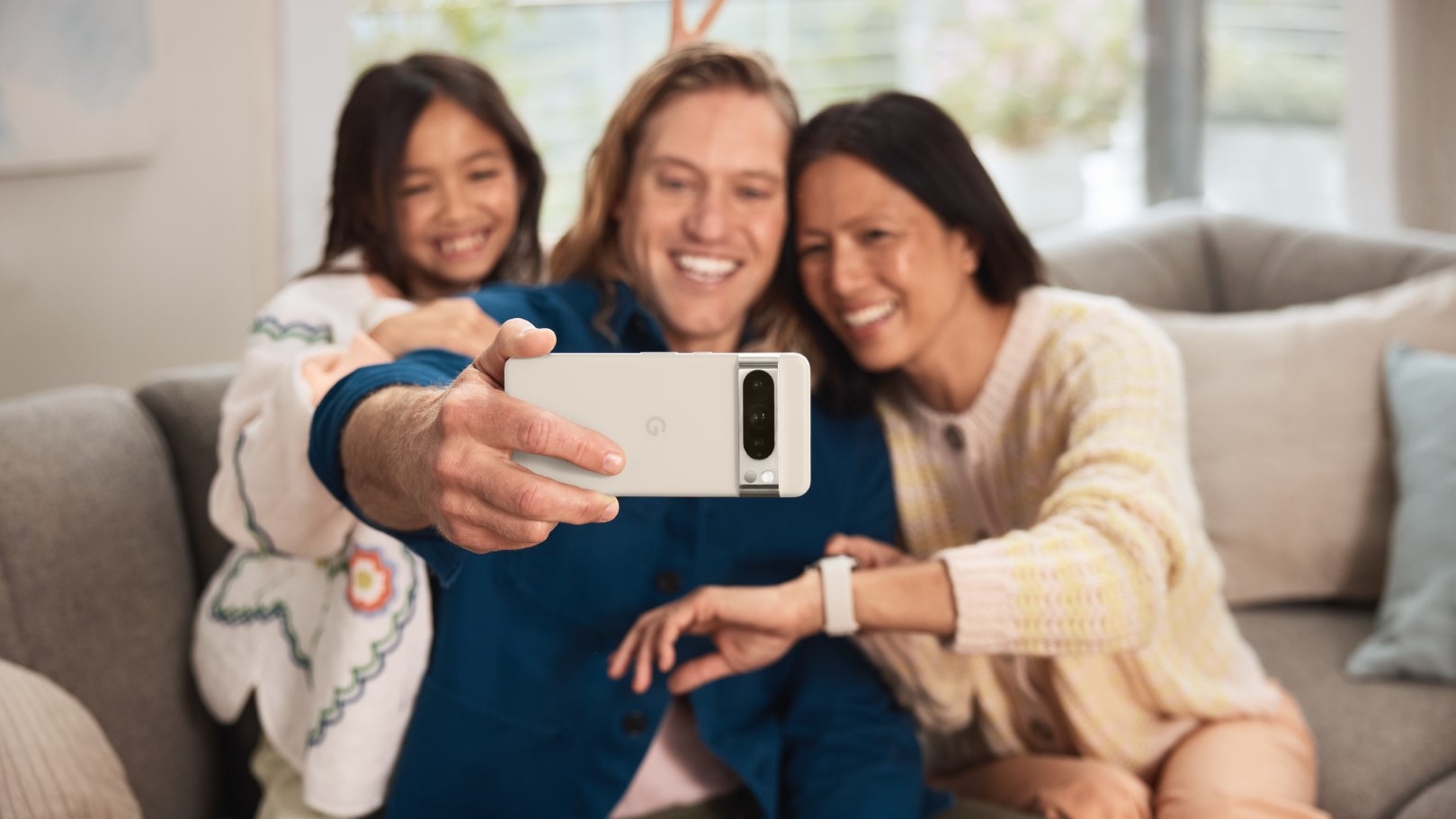Google Pixel 8 Pro vs Google Pixel 7 Pro: Is it time to upgrade?
Take your Pixel

Google’s Pixel 8 Pro is awash with AI capabilities and computational photography prowess, but so too is the Google Pixel 7 Pro.
Is Google’s newest flagship truly better than its previous offering? And, if so, by how much are we talking? It’s entirely possible that the Pixel 7 Pro still remains a fantastic solution to all your smartphone needs, and it could even save you a pretty penny along the way.
Is the Pixel 8 Pro an essential upgrade? Let’s find out.
Google Pixel 8 Pro vs Google Pixel 7 Pro: Specifications
| Header Cell - Column 0 | Google Pixel 8 Pro | Google Pixel 7 Pro |
|---|---|---|
| Processor | Tensor G3 + Titan M2 | Tensor G2 + Titan M2 |
| OS | Android 14 | Android 13 |
| RAM and storage | 12GB - 128GB/256GB/512GB/1TB | 8GB - 128GB/256GB, 12GB - 128GB/256GB/512GB |
| Display | 6.7-inch Super Actua LTPO OLED | 6.7-inch AMOLED |
| Resolution (ppi) | 1344 x 2993 (489) | 1440 x 3120 (~512) |
| Refresh Rate | 10-120Hz | 1-120Hz |
| Brightness | 2,400 nits peak brightness | 1,500 nits peak brightness |
| Battery | 5,050 mAh | 5,000 mAh |
| Dimensions | 6.4 x 3.0 x 0.3 inches | 6.41 x 3.02 x 0.35 inches |
| Weight | 213g (7.5 oz) | 212g (7.48 oz) |
Google Pixel 8 Pro vs Google Pixel 7 Pro: Price

Since last year’s launch of the Pixel 7 Pro, we’ve been holding out hope that Google maintains the model’s $899 price point. Sadly, as confirmed by the brand during its recent Made by Google event, the Pixel 8 Pro is going up in price to $999. For that additional cost, you are getting some new features too, which are only made possible by Google’s new Tensor G3 processor.
However, there’s still plenty on offer from the Pixel 7 Pro and its Tensor G2 chip at its original price point, and it’ll likely inherit a number of software features from the Pixel 8 Pro too. That means its value will only grow throughout the remaining three years of support Google is offering.
Winner: Google Pixel 7 Pro
Google Pixel 8 Pro vs Google Pixel 7 Pro: Design

There’s very little to separate these two devices when it comes to design. Of the things to note, the new Pixel 8 Pro features more curvature to its corners. This new rounded-edge profile ever-so-slightly affects the device's silhouette, and gives it a smoother and more modern aesthetic — departing from the tighter corners of the previous Pixel 7 Pro.
Sign up to receive The Snapshot, a free special dispatch from Laptop Mag, in your inbox.
There are also two more prominent changes taking place on the Pixel 8 Pro’s iconic camera bar: a redesigned camera array and an all-new temperature sensor.
Starting with the camera bar’s layout, Google has ditched the pill-and-punch-hole design for an all-in-one pill-shaped porthole. The new design looks tidier and bolsters the phone’s overall minimalist design aesthetic.
Along with the Pixel 8’s AI features, it’s also going to be something you want to keep an eye on in case that bar starts oscillating red light — indicating the Cylons have started to revolt. The new design direction appears to be adapting to years of memes, now leaving the Pixel 8 Pro just one colorway away from looking like it’s geared up to lead a rag-tag group of mutants to thwart Magneto’s evil schemes.
Finally, the Google Pixel 8’s new temperature sensor allows users to measure… Well, temperatures. Feeling a little feverish? Need to check that the baby bottle is safe to offer? Want to know if that pan is hot enough? Want to see how hot the flames of the fire quickly spreading throughout your home are after ignoring your kitchen duties to spend your time measuring the temperature of various things around your house? Now you can!
Winner: Google Pixel 8 Pro
Google Pixel 8 Pro vs Google Pixel 7 Pro: Display

Is the Pixel 7 Pro’s 6.7-inch. LTPO OLED display bested by the Pixel 8 Pro’s 6.7-inch Super Actua OLED panel? Not exactly. In fact, they’re both exactly the same types of display, but Google is just trying its best to go down the Apple route of applying an impressive-sounding name to its display for better marketing.
Interestingly, where the two phones differ initially goes in favor of the Pixel 7 Pro, with it featuring a full 1440p resolution with roughly 512 pixels per inch keeping things nice and sharp. The Pixel 8 Pro falls just shy of this, offering a resolution just shy of the Pixel 7 Pro’s at 1344 x 2993 pixels with a reduced pixels per inch count of 489.
However, the Pixel 8 Pro reclaims some ground with its full 1-120Hz dynamic refresh rate. This allows the latest Pixel Pro to pick and choose when to adopt a higher or lower refresh rate depending on the content, preserving the device’s battery in the process.
The Pixel 8 Pro is also considerably brighter with a 2,400 nits peak brightness over the Pixel 7 Pro’s 1,500 nits peak brightness. 1,500 nits is already a considerable amount of brightness, but the Pixel 8 Pro’s 2,400 nits will make it exceptionally clear and free from glare while out and about — even on the sunniest of days.
Winner: Google Pixel 8 Pro
Google Pixel 8 Pro vs Google Pixel 7 Pro: Processor

The Pixel 8 Pro’s new Tensor G3 chip is a noticeable improvement over the Tensor G2 found in its predecessor. Geekbench 6 results showcase an impressive leap in multi-core performance scores and a commendable bump when it comes to single-core results too.
| Header Cell - Column 0 | Google Pixel 8 Pro | Google Pixel 7 Pro |
|---|---|---|
| Single-core Score | 1760 | 1408 |
| Multi-core Score | 4442 | 3390 |
Google’s Tensor G3 processor also unlocks a number of on-board generative AI features for Pixel owners to make great use of. However, is the Tensor G3 a phenomenally powerful upgrade? Not really. Google is sort of taking on Nintendo’s role in the console wars at the minute, offering close to the performance of the current Samsung Galaxy S23 Ultra — a phone soon to be eclipsed by the release of the S24 Ultra next year.
That being said, both phones are capable of solid performance for 99% of all smartphone tasks most users seek to get on with throughout their day. Phones are simply too powerful to accurately judge them on sheer computational power alone, these numbers are largely irrelevant to practical day-to-day use after all.
Unless hardcore mobile gaming takes off in a big way over the next year or two (with Samsung and Apple getting serious about graphical performance on their smartphones, it just might), both phones are more than enough for most people. Though, the Pixel 8 Pro’s Tensor G3 chip does bring more to the table — in terms of both power and features.
Winner: Google Pixel 8 Pro
Google Pixel 8 Pro vs Google Pixel 7 Pro: Cameras

The Google Pixel 8 Pro makes two significant changes to its camera array from what the Pixel 7 Pro has to offer, and only one of which will be immediately noticeable to most when looking at each phone’s inventory in the table below.
| Header Cell - Column 0 | Google Pixel 8 Pro | Google Pixel 7 Pro |
|---|---|---|
| Front Camera | 10.5MP (Autofocus, 1.22 μm, ƒ/2.2) | 10.8MP (ultrawide, 1.22 μm, ƒ/2.2) |
| Rear Camera (Main) | 50MP (wide, 1.2 μm, ƒ/1.68) | 50MP (wide, 1.2 μm, ƒ/1.9) |
| Read Camera (Ultrawide) | 48MP (0.8 μm, ƒ/1.95) | 12MP (1.25 μm, ƒ/2.2) |
| Real Camera (Tele) | 48MP (5x optical zoom, 0.7 μm, ƒ/2.8) | 48MP (5x optical zoom, 0.7 μm, ƒ/3.5) |
Yes, the Google Pixel 8 Pro now includes a 48-megapixel ultrawide lens (a vast improvement over the Pixel 7 Pro’s 12MP offering), but there is also a noticeable drop in aperture numbers too.
Usually, something with a lower number would be seen as bad, but a lower aperture means that more light can reach the Pixel 8 Pro’s camera sensors. This could drastically improve low-light imaging and Night Sight results.
Winner: Google Pixel 8 Pro
Outlook
So, which phone comes out on top? Clearly, the Pixel 8 Pro is the better of the two — that much is plainly obvious. Featuring a faster processor, an improved camera array, and a host of exclusive software features, those looking for the best option need only look at Google’s newest offering.
But is it an essential upgrade? No! The Pixel 7 Pro remains a fantastic device, with more than enough processing power for use as a daily driver for years to come. Not to mention it’s still one of the best smartphones for shutterbugs on the market — especially with its consumer-friendly pricing.
Will you miss out on some of the Pixel 8 Pro’s new features? Sure. But if you’re already getting a little tired of the buzz around AI, or are long past thinking that generative AI has begun to jump the shark, then you’ll likely remain nonplussed about the majority of the Pixel 8 Pro’s Tensor G3-backed features — and still able to enjoy some of the others as they seep into other Pixel devices with the Android 14 update.
However, if you want the full Pixel experience, the Pixel 8 Pro is everything — offering impressive performance, improved cameras, improved software, onboard AI capabilities, dramatically improved video, and seven years of further updates and improvements from Google.

Rael Hornby, potentially influenced by far too many LucasArts titles at an early age, once thought he’d grow up to be a mighty pirate. However, after several interventions with close friends and family members, you’re now much more likely to see his name attached to the bylines of tech articles. While not maintaining a double life as an aspiring writer by day and indie game dev by night, you’ll find him sat in a corner somewhere muttering to himself about microtransactions or hunting down promising indie games on Twitter.
